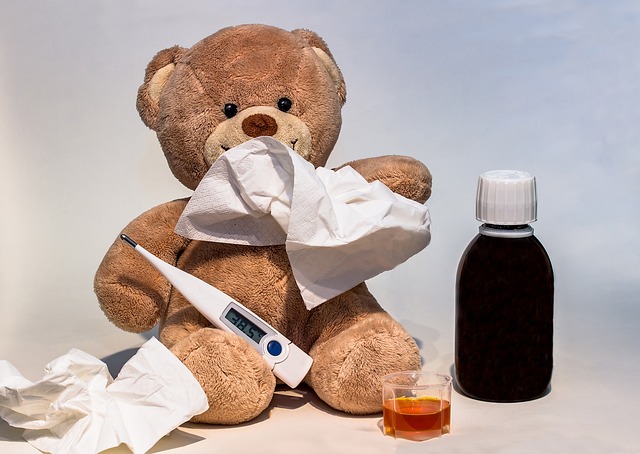Medication-Assisted Treatment (MAT) is a multifaceted approach in addiction recovery that combines medication with counseling and therapy to target the brain's reward, memory, and executive functioning circuits affected by substance use disorders like alcohol and opioid addiction. MAT aims to normalize these circuits and alleviate symptoms over time, addressing not just the physical but also the cognitive, emotional, social, and psychological aspects of addiction. It effectively manages withdrawal, reduces cravings, counteracts drug effects, and decreases relapse risk. Tailored to individual needs, MAT uses medications like methadone, buprenorphine, and naltrexone for opioid addiction and disulfiram and acamprosate for alcohol dependence. The treatment's success lies in its ability to maintain patient engagement, a key factor in sustained recovery. MAT ensures physical stability and tackles underlying psychological and social issues, promoting long-term recovery from addiction and representing a significant advancement in addressing substance use disorders. This evidence-based strategy is an integral part of treating opioid use disorder (OUD), offering a personalized, holistic path toward recovery that improves health and wellbeing over time.
Medication-Assisted Treatment (MAT) stands as a pivotal strategy in the realm of addiction recovery, harmonizing medical interventions with behavioral health therapies. This article delves into the multifaceted approach of MAT, examining its role in combating opioid use disorder and its effectiveness in neurobiological recovery. We explore the integration of key medications, the personalization of treatment plans to meet individual needs, and the significant impact of a comprehensive, multidisciplinary approach. MAT’s combination with behavioral therapies is highlighted as a crucial component in sustaining long-term recovery outcomes. Furthermore, addressing stigma, overcoming access barriers, and supporting those beyond substance abuse are critical aspects of MAT’s holistic approach to addiction recovery. Case studies illustrate successful MAT programs, while insights into the future of MAT and its role in addressing co-occurring disorders offer a forward-looking perspective on substance abuse care. Community and policy efforts are also pivotal in ensuring widespread support for MAT initiatives.
- Understanding Medication-Assisted Treatment (MAT) in Addiction Recovery
- The Role of MAT in Addressing Opioid Use Disorder
- Key Medications Used in Medication-Assisted Treatment Programs
Understanding Medication-Assisted Treatment (MAT) in Addiction Recovery

Medication-Assisted Treatment, commonly known as MAT, is a comprehensive approach to addiction recovery that employs medications in combination with counseling and behavioral therapies. This evidence-based practice addresses the use of alcohol or opioids by targeting brain circuits involved in the reward, memory, and executive functioning to normalize their activity over time. The goal of MAT is not merely to substitute one addictive substance for another but to provide a whole-patient approach that facilitates recovery from addiction and its cognitive, emotional, social, and psychological aspects.
MAT has been shown to be effective in managing withdrawal symptoms, reducing drug cravings, blocking the euphoric effects of opioids, and preventing relapse. This treatment modality is individualized based on the patient’s specific needs, which can include medications like methadone, buprenorphine, and naltrexone for opioid addiction, or disulfiram and acamprosate for alcohol dependence. By engaging in MAT, individuals have a higher likelihood of remaining in treatment, which is a critical factor in long-term recovery success. The integration of medication with counseling and therapy not only supports physical stability but also addresses the underlying psychological and social factors that contribute to addiction, thereby enhancing the overall effectiveness of addiction recovery programs.
The Role of MAT in Addressing Opioid Use Disorder

Medication-Assisted Treatment (MAT) plays a pivotal role in the multifaceted approach to addressing opioid use disorder (OUD). This evidence-based treatment combines medications, counseling, and behavioral therapies to treat individuals with OUD, aiming to normalize brain chemistry, block the euphoric effects of opioids, relieve cravings, and stabilize body functions without the negative effects of the abused drug. MAT is not a quick fix but rather a long-term recovery strategy that helps patients achieve significant improvements in their health and wellbeing. The use of medications such as methadone, buprenorphine, and naltrexone in MAT has been shown to be highly effective in addiction recovery by reducing withdrawal symptoms and cravings, which are common barriers to successful recovery from OUD. This approach is individualized, taking into account the patient’s unique situation, including their medical history, substance use patterns, and personal treatment goals. By addressing the complex needs of those with OUD, MAT facilitates a more comprehensive and effective path toward sustained recovery.
Key Medications Used in Medication-Assisted Treatment Programs

Medication-assisted treatment (MAT) is a comprehensive approach that combines medications, counseling, and other therapies to effectively treat substance use disorders. The key medications used in MAT programs are critical components that help manage withdrawal symptoms, reduce drug cravings, and block the effects of opioids. Methadone and buprenorphine are two primary medications for treating opioid addiction; they work by binding to the same opioid receptors in the brain as heroin or other opioids, reducing cravings and preventing withdrawal symptoms. Naltrexone is another medication that blocks opioid receptors and can be used after a person has gone through detoxification to help prevent relapse. For alcohol use disorder, disulfiram and acamprosate are often prescribed; disulfiram creates an aversive reaction when the individual consumes alcohol, while acamprosate helps reduce cravings and the negative consequences of withdrawal. These medications, when combined with behavioral therapies, significantly increase the chances of sustained recovery from addiction. The integration of these medications into treatment regimens is a testament to the evolving understanding of addiction as a chronic disease that requires a multifaceted intervention strategy for effective management and recovery.
Medication-Assisted Treatment (MAT) represents a pivotal approach in the addiction recovery landscape, effectively addressing the complex needs of individuals grappling with Opioid Use Disorder. This article has delved into the intricacies of MAT, highlighting its critical role and the key medications that support this method. By integrating pharmacological intervention with counseling and behavioral therapies, MAT facilitates a comprehensive recovery process that can lead to sustained abstinence and improved overall health outcomes for those affected by opioid addiction. As we continue to advocate for accessibility and increased awareness of MAT, it stands as a promising beacon in the journey toward healing and long-term recovery.




